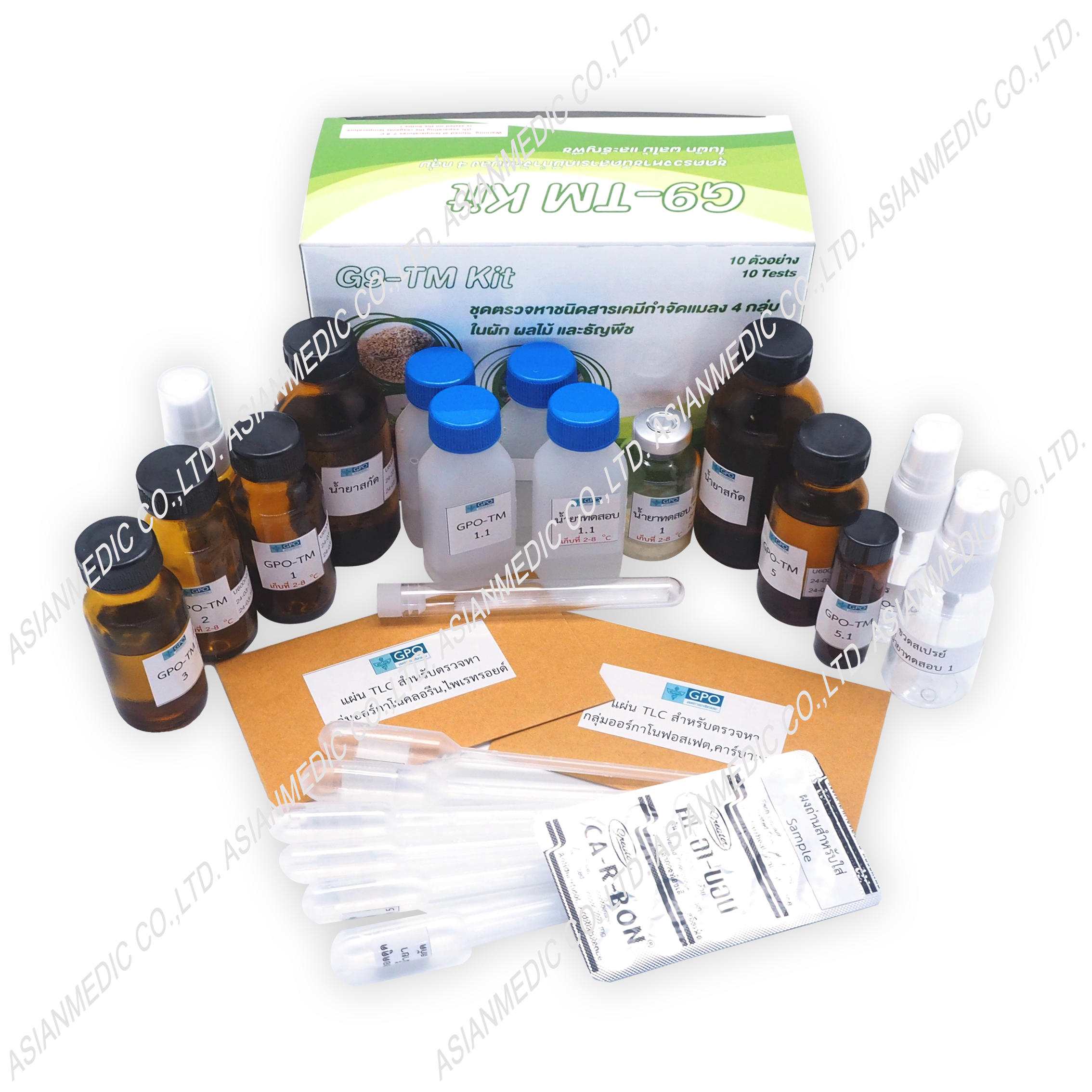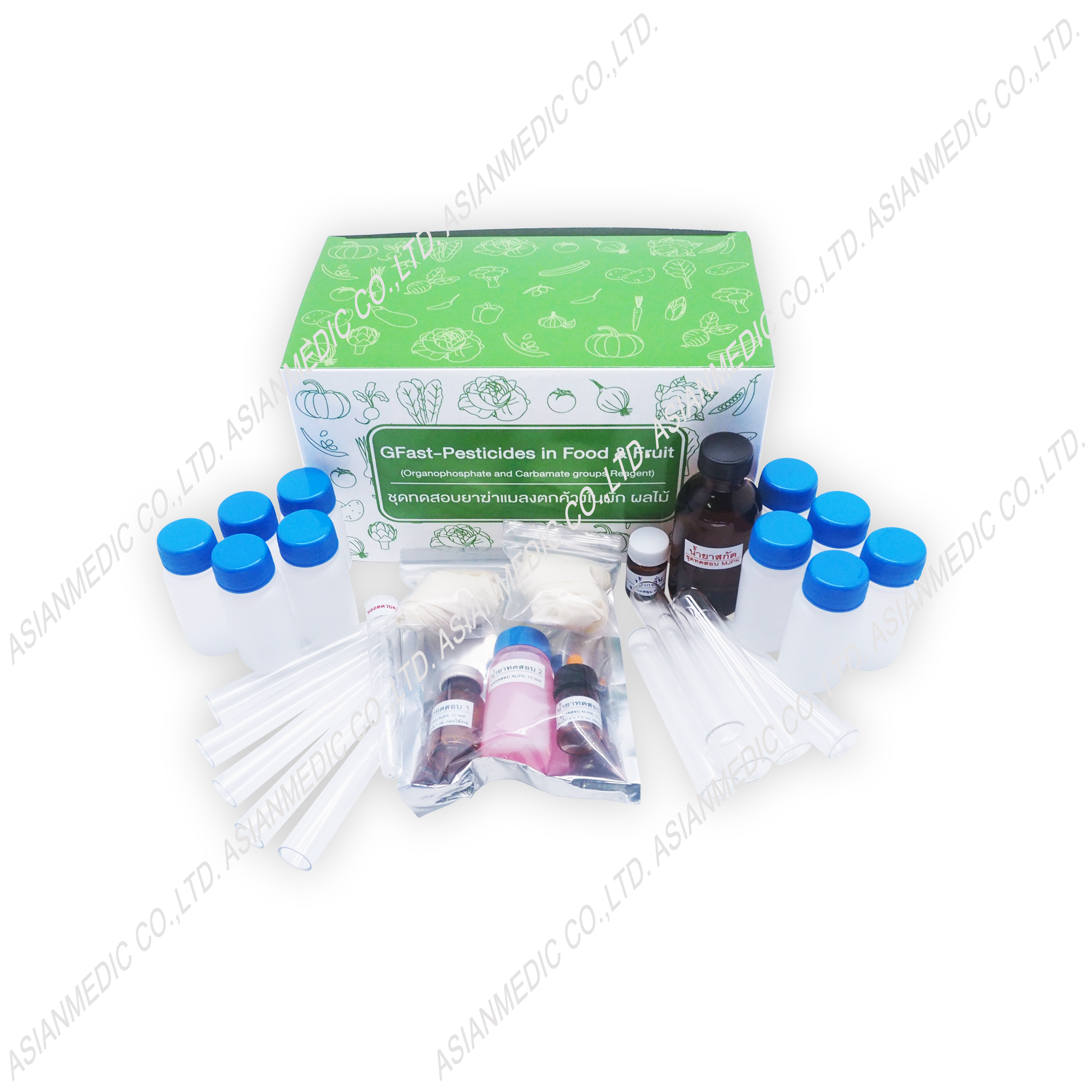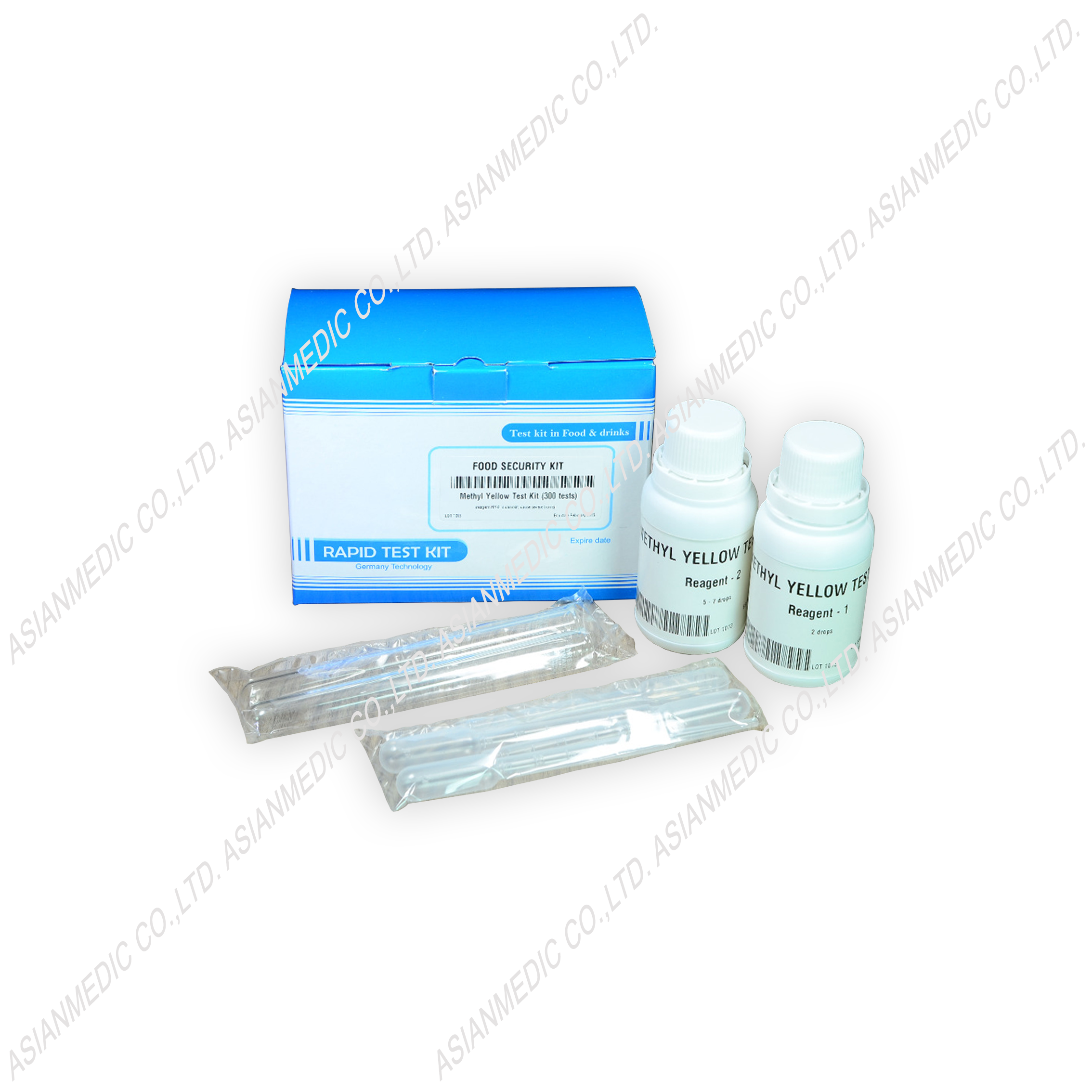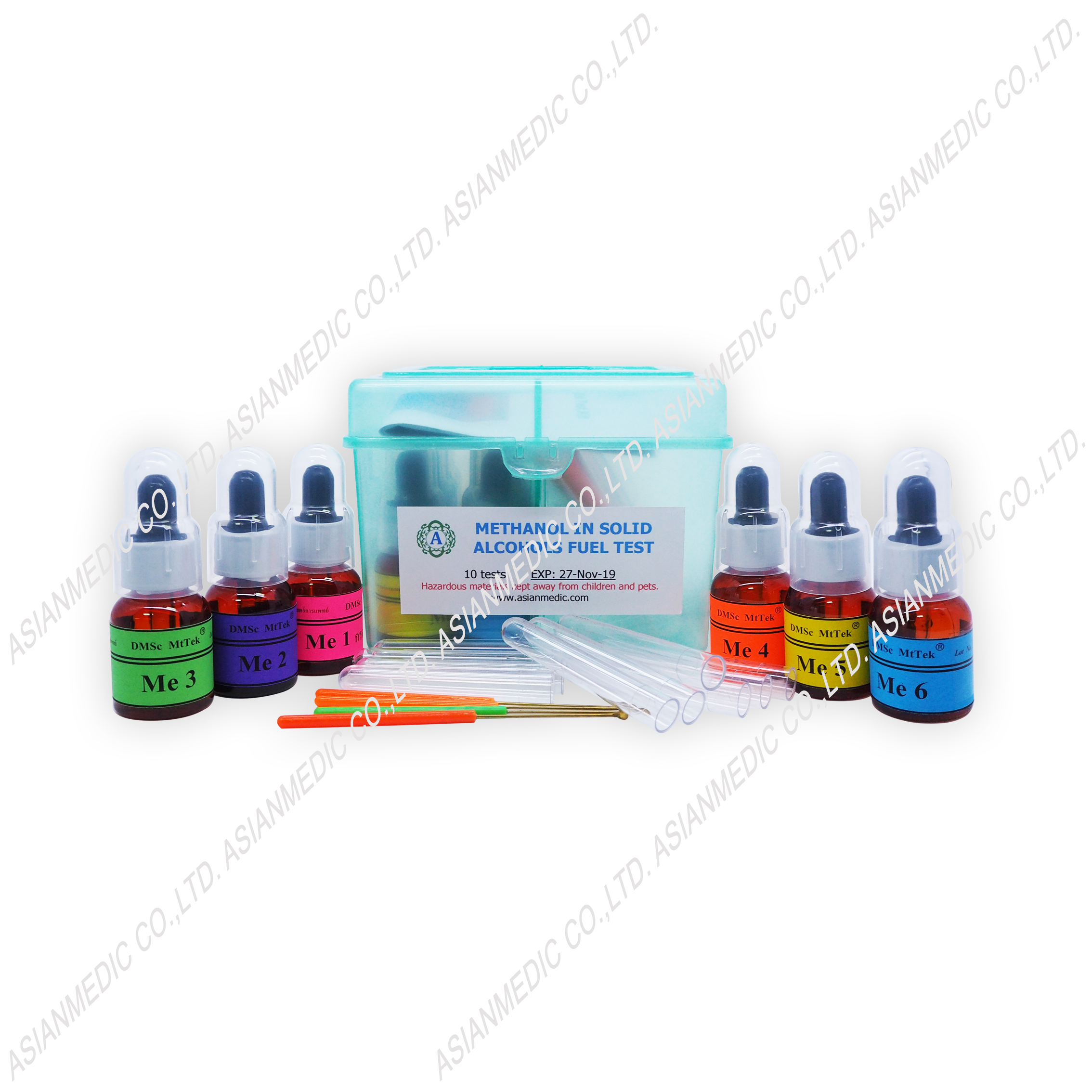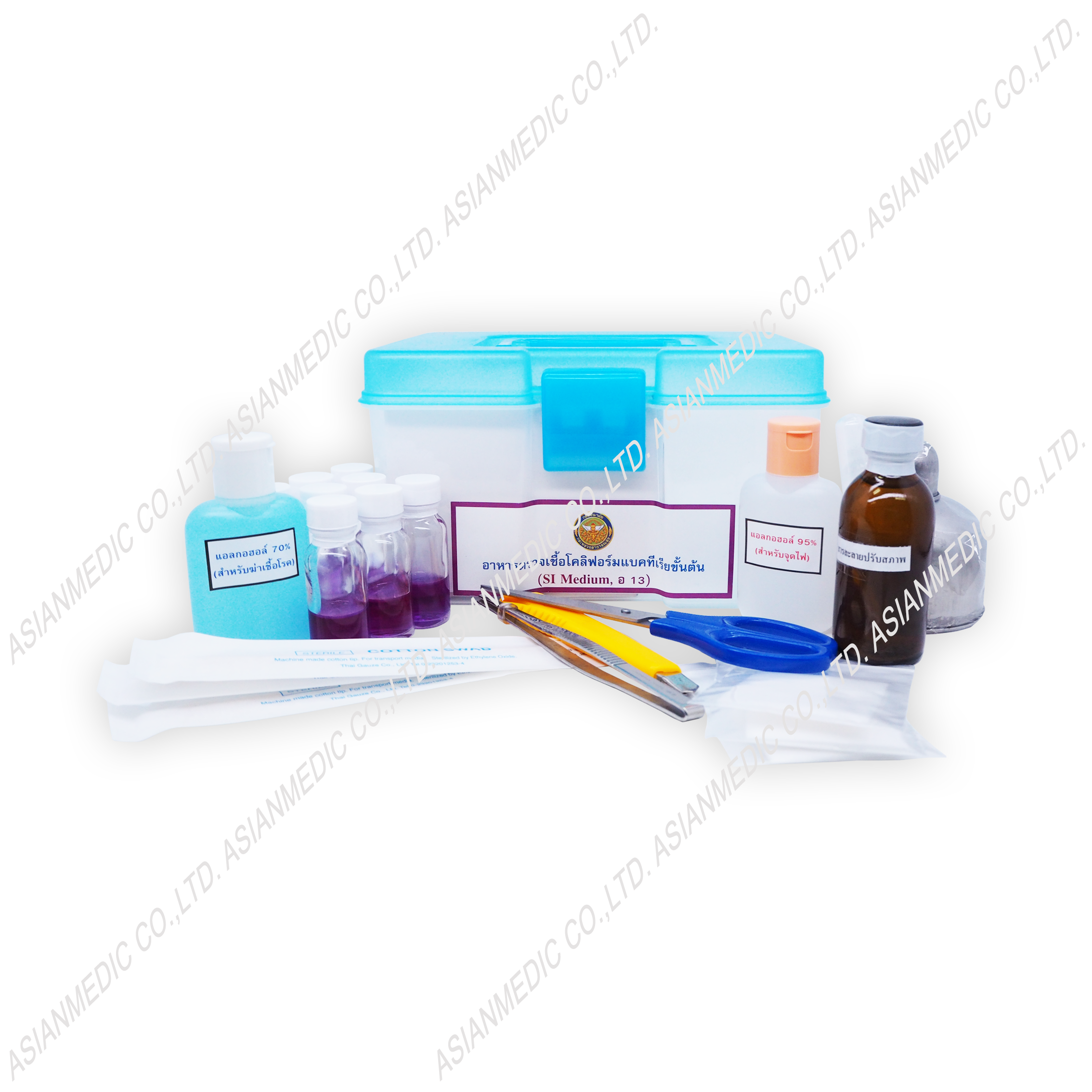Test Kit for testing free residual chlorine in drinking water (O31)
To measure free residual chlorine in water using the test kit (O31) developed by Department of Health is simple, inexpensive and reliable. Free residual chlorine levels can be obtained by colour comparing with Three Standard Colour Bottles which follows the standard methods for the examination of water and wastewater, 12th ed. The test kit (O31) is much cheaper than chlorine test kit from abroad. The local people can easily use the test kit (O31) by themselves.
A study reveals that measurement of free residual chlorine using (O31) following the right procedure is reliable and in correlation with the standard laboratory analysis based on correlation coefficient value 0.9786.
Preparation
– A cup of drinking water.
– Three bottles of Standard Colour Bottles provide results of free residual chlorine at concentration of 0.2, 0.5 and 1 milligram per liter (ppm).
– An empty bottle which indicates a certain level for adding water sample for testing.
– One plastic bottle containing testing reagent.
- 1. Pour drinking water into the empty bottle as directed.
- Add 4 drops of free residual chlorine testing reagent in the bottle containing drinking water.
- Mix the solution thoroughly by inverting the bottle upside-down 20 times. Notice that colour is developed.
Caution:
- Do not contaminate drinking water with free residual chlorine testing reagent.
- Keep free residual chlorine testing reagent away from children’s reach.
- If free residual chlorine testing is accidentally on skin, wash the skin thoroughly with water.
- Contain: 20 test
- Keep in Cool: 4-30 C
- Stability: 12 month
| Recommended criteria of qualified potable water by World Health Organization (1984) | ||
| Parameter | Unit | Standard criteria |
| Free residual chlorine | Milligram/liter | 0.2-0.5 |
| Standard criteria of qualified potable water by Ministry of Interior, Kingdom of Thailand (1998) | ||
| Parameter | Unit | Standard Criteria |
| Free residual chlorine | Milligram/ liter | 0.2-0.5 |

![Free Chlorine[A31] Front_1200x800_ลายน้ำ](https://asianmedic.com/wp-content/uploads/2017/08/Free-ChlorineA31-Front_1200x800_ลายน้ำ.png)
